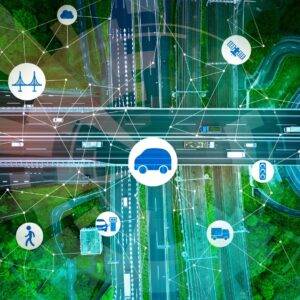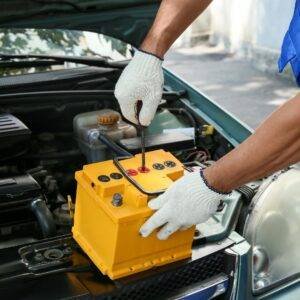This decline in EV sales raises concerns about the future of electric cars and their ability to fulfill their promise of a cleaner and more sustainable transportation option. It also poses challenges for government initiatives aimed at promoting the adoption of electric vehicles on Irish roads.
One factor that may have contributed to the decline in EV sales is the lack of adequate charging infrastructure. While the number of public charging stations has been increasing, it is still not sufficient to meet the growing demand for electric vehicles. This lack of infrastructure can deter potential buyers who are concerned about the accessibility and convenience of charging their vehicles.
Another factor that may be impacting EV sales is the limited range of electric cars compared to traditional gasoline-powered vehicles. Although the range of electric cars has been improving over the years, it is still a concern for many consumers, especially those who frequently travel long distances. The fear of running out of battery power and not being able to find a charging station can be a significant deterrent for potential buyers.
Additionally, the higher upfront cost of electric vehicles compared to traditional cars remains a barrier for many consumers. While the long-term savings on fuel and maintenance costs can offset this initial investment, not everyone is willing or able to make that upfront financial commitment.
Furthermore, the limited variety of electric car models available in the market also plays a role in the decline of EV sales. Consumers have different preferences and needs when it comes to their vehicles, and the lack of options can limit their choices and deter them from considering an electric car as a viable option.
To address these challenges and revive the electric car market, it is crucial for the government and industry stakeholders to work together. The government should continue investing in the expansion of charging infrastructure, ensuring that it is easily accessible and convenient for EV owners. Incentives and subsidies can also be provided to make electric vehicles more affordable for consumers, encouraging them to make the switch.
Moreover, automakers should focus on developing electric cars with longer ranges and improving battery technology to alleviate range anxiety and increase consumer confidence. Increasing the variety of electric car models available in the market will also cater to a wider range of consumer preferences and needs.
In conclusion, while the recent decline in EV sales is concerning, it does not necessarily mean that electric cars have lost their spark. There are still challenges to overcome, such as the lack of charging infrastructure, limited range, higher upfront cost, and limited variety of models. However, with continued investment, innovation, and collaboration between the government and industry stakeholders, electric vehicles can regain their momentum and become a more prominent and sustainable mode of transportation in the future.
While these figures may be concerning, it is important to note that the decline in EV sales is not unique to Ireland. Similar trends have been observed in other new car markets, indicating a typical life-cycle pattern in the adoption of any new technology. This pattern often involves a gap between early adopters and the broader majority of consumers.
Brian Cooke, the Director General of the Society of the Irish Motor Industry (SIMI), suggests that this temporary slowdown in EV buying coincides with the need to accelerate the growth of EV sales. Despite this setback, government plans to increase the number of EVs on Irish roads are still a priority.
One of the factors contributing to the temporary slowdown in EV adoption is the lack of charging infrastructure. While Ireland has made significant progress in installing public charging stations, there is still a need for more widespread coverage. Many potential EV buyers are hesitant to switch to electric vehicles due to concerns about range anxiety, the fear of running out of battery power during long journeys. To address this issue, the government has announced plans to invest in the expansion of the charging network, ensuring that EV owners have convenient access to charging facilities wherever they go.
Another challenge that has hindered the widespread adoption of EVs is the higher upfront cost compared to traditional petrol or diesel vehicles. Although EVs have lower running costs and are more environmentally friendly in the long run, the initial investment can be a deterrent for some consumers. To make EVs more affordable, the government has introduced various incentives, such as grants and tax rebates, to encourage people to switch to electric vehicles. These incentives aim to offset the higher upfront costs and make EVs a more financially viable option for consumers.
Furthermore, the availability of a diverse range of EV models has also played a role in the temporary slowdown in adoption. In the early stages of EV development, there were limited options available to consumers, with most models being small and compact. However, as technology has advanced, automakers have started introducing larger and more practical EVs, such as SUVs and sedans, to cater to a wider range of consumer preferences. The introduction of these new models is expected to boost EV sales and attract a larger segment of the population who may have been hesitant to switch to electric vehicles in the past.
In conclusion, while the recent decline in EV sales in Ireland may be a cause for concern, it is important to view it within the context of a typical life-cycle pattern in the adoption of new technologies. The government’s commitment to increasing the number of EVs on Irish roads, coupled with efforts to improve charging infrastructure, make EVs more affordable, and offer a wider range of models, are all positive steps towards accelerating the growth of EV adoption in the country.
Despite the decline in EV sales and the potential price cuts, the implications for the market are complex and multifaceted. On one hand, the decrease in demand could lead to more affordable EVs, making them accessible to a wider range of consumers. This could be a positive development for those who have been hesitant to make the switch to electric vehicles due to their higher price point.
However, the potential price war among brands could have unintended consequences for current EV owners. If lower-cost new EVs flood the market, it could result in a decrease in the resale value of existing models. This could undermine the confidence of current EV owners in purchasing another electric vehicle, as they may be concerned about the potential depreciation of their investment.
As a result of these factors, many consumers are adopting a cautious approach and exploring alternative options such as hybrid vehicles and plug-in hybrids. These vehicles offer a compromise between the environmental benefits of electric vehicles and the convenience of traditional internal combustion engines. Currently, petrol cars hold the largest market share at 32.97%, followed by diesel at 23.76%. Hybrids (petrol-electric) account for 21.5% of the market, while pure electric vehicles hold a 12.46% share. Plug-in electric hybrids have a 7.76% market share.
In addition to the shift towards hybrid vehicles, there has also been a notable increase in the import of used cars. In February alone, there was a 24% rise in the import of used cars, and a 32.1% increase compared to the previous year. This suggests that some consumers are opting for more affordable options in the used car market rather than purchasing new EVs. This trend could be driven by the desire to save money or by concerns about the long-term value of electric vehicles.
Overall, the decline in EV sales has sparked a range of responses in the market. While it may lead to more affordable options for potential buyers, it also raises concerns about the resale value of existing EVs and has prompted some consumers to explore alternative options. The market is evolving rapidly, and it will be interesting to see how brands and consumers adapt to these changing dynamics.
The Current Landscape
Despite the recent decline in sales, certain EV models continue to perform well in the market. The top-selling EVs currently are the Hyundai Kona, Volkswagen ID.4, MG4, BYD Seal, and Volkswagen ID.3. In terms of overall new car sales, the Skoda Octavia holds the top position, while the Tesla Model 3 remains the best-selling EV.
As the automotive industry navigates the challenges of transitioning to electric mobility, it is crucial to monitor and understand the fluctuations in EV sales. While the recent figures may raise concerns, it is important to view them within the broader context of the evolving market dynamics and consumer preferences.
One factor that may have contributed to the decline in EV sales is the ongoing COVID-19 pandemic. The pandemic has had a significant impact on the global economy, leading to job losses and financial uncertainties for many individuals. As a result, some consumers may have postponed their plans to purchase an electric vehicle due to financial constraints or a shift in priorities.
Another factor to consider is the availability of charging infrastructure. While the number of charging stations has been steadily increasing, there is still a need for further expansion to alleviate range anxiety and make EV ownership more convenient for consumers. Governments and private companies are working towards this goal, but it will take time for the infrastructure to catch up with the growing demand for electric vehicles.
Additionally, the range and affordability of EVs continue to improve, making them a more viable option for a larger segment of the population. However, there is still work to be done in terms of educating consumers about the benefits of electric vehicles and dispelling common misconceptions, such as limited range and lack of charging options.
Ultimately, the future of electric cars will depend on various factors, including advancements in technology, infrastructure development, and consumer acceptance. As governments and manufacturers continue to invest in the growth of EVs, it is expected that the initial slowdown in sales will be overcome, leading to a more sustainable and electrified transportation landscape.




